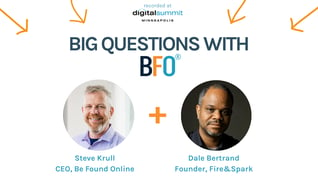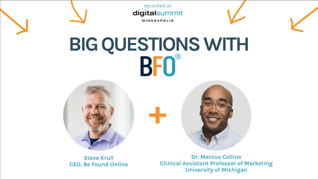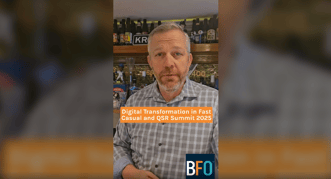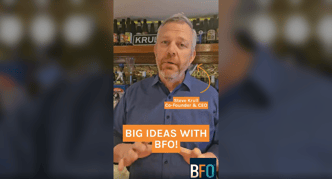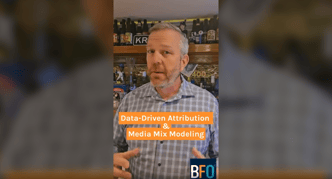Audience Targeting in the Post-Cookie 'Apocalypse'
January 12, 2024
6 Minute Read
The Golden Age of Audiences
Back in the day (pre-March 2018), when you wanted to run digital marketing campaigns, you could simply go into Google Ads or Meta Ads (then Facebook) and select from and target their pre-built 3rd party audiences for your Digital Marketing campaigns. These audiences included things like hobbies and interests, education level and college/university, employment, home ownership, relationship status, brand affinities, and even political leanings. The ads’ UIs would not only let you target their audiences, they’d encourage you to add additional audiences: Targeting people who jog and are looking for running shoes? Have you thought about targeting everyone that has feet?
It was great! Clients would come to you saying they wanted help selling their men’s recycled vegan running shoes and you’d go in and select: Men + Vegan + Running/Jogging + Eco-Conscious and you’d be off to the races with your ad campaign. (Pun fully intended.) As your ads ran, you’d get insights on what other behaviors and interests the users who engaged with your ads had, and you’d be able to expand and/or refine your audience targeting. You could even create lookalike audiences based on who was engaging with ads, as well as taking action and converting on your site.
Where Did (All) the Audiences Go?
Cambridge Analytica ruined it for everyone! Okay, it’s not just on them, but when that was exposed, and we learned about user data and modeling (as well as the rise of privacy regulations and user concerns), audiences started to go away. In most cases, audiences disappeared gradually. For some other audiences, though, they disappeared overnight.
There were freak-outs by agencies, clients, and brands alike.
“What are we going to do?!?!? Our audiences are gone!!!”
On a call with an agency partner, some of their team was freaking out about this (total pants on fire panic) when one of the partners, always a sage of wisdom and calm, said, “The only thing constant is change.” His comment didn’t change anything. It didn’t fix anything, but it served as a reminder of what we’ve always known in the world of digital marketing. So what did we do? We did what we always do (and still do to this day as digital marketers) - we adapted our strategies, learned what we could and couldn’t do, and grew from it. It was all going to be smooth sailing from there on out, right? Nope.
There was another privacy/audience shake-up on September 16th, 2020, when Apple released iOS14 which famously allowed users to opt-out of being tracked (as well as required apps to ask users for their permission to be tracked). For some brands, this was more significant than losing the ability to target 3rd party audiences, as brands’ retargeting audiences were impacted as well.
Speaking for BFO, the morning after iOS 14 rolled out we discovered overnight, a client lost 90% of their retargeting audiences. We had extensively built-out and segmented audiences based on pages visited, items purchased, demographic info…. and on September 17th, 2020, every one of our retargeting audiences was too small to target in Meta.
And once again, the industry was adapting and changing.
What Can We Do?
With privacy changes and audiences going away, how do we effectively target audiences in Google and Meta without relying on personal data? Glad you asked:
1. Context Is King
With limited individual data, understanding the context in which users search and engage becomes paramount. Focus on relevant keywords, topics, and placements to reach users actively interested in your product or service. Leverage Google's "Contextual Solutions" and Meta's "Topics" to target based on broader user interests and online behavior.
2. Embrace First-Party Data
Your own customer data is more valuable than ever. Invest in building a robust first-party data platform, collecting information like website visits, email interactions, and purchase history. This data can be used to create custom audiences, lookalike audiences, and inform contextual targeting strategies. Cross-collaboration between your Marketing and Data (Analytics) teams is crucial to the success of your campaigns. In addition, if you’re not thinking about a retargeting strategy and building audiences in GA4 before your campaign goes live, you’ve already lost. Step 2 is just as important as Step 1!
If you’re serious about owning your first-party data (and we believe you should be), we encourage you to check out this blog post about the benefits of Server-Side Tracking, as it’s more relevant today than ever before.
3. Leverage Intent Signals
Go beyond keywords and consider user intent. Google's Smart Bidding and Meta's Advantage Bidding use machine learning to analyze user behavior and predict their likelihood to convert. These tools can help you prioritize ad placements for users actively showing purchase intent, maximizing your return on ad spend.
Do not sleep on Advantage Bidding in Meta! Here’s what someone smarter than me has to say about it:
“In Meta, audiences were the most effective tool in successful campaigns, especially lookalikes.
Then, Apple released an iOS that prevented Facebook’s ability to track user behavior and create these audiences. Since Facebook and Instagram are mobile-heavy and most users use Apple products, Facebook’s business almost died overnight. So Facebook had to revamp how their algorithm finds audiences. No longer able to effectively track outside platform user behavior, Facebook uses on-platform user behavior (video views, likes, comments, etc.) for targeting.
With on-platform user behavior being the forefront in targeting, Facebook has come out and said that they want these broad audiences (called Advantage Plus) to be used for targeting with marketers focusing on creative that will drive action and allow Facebook’s algorithm to utilize on-platform behavior against your ad to drive results. So you need to pair Advantage Plus audiences with dynamic creative to identify ads that resonate the best with users and will utilize Facebook’s algorithm to the highest extent.”
4. Content Isn't Just King, It's the Cavalry
High-quality, informative content attracts the right audience and builds trust. Create content that addresses your target audience's pain points and interests, positioning yourself as an authority in your field. How are you different? How are you better? Call it out! Utilize Google's "Discovery Ads" and Meta's "In-Feed Ads" to showcase your content and reach engaged users.
5. Prioritize Privacy and Transparency
Be transparent about how you use data and respect user privacy. Clearly communicate your data collection practices and offer opt-out options. Building trust with your audience will encourage continued engagement and data sharing, strengthening your first-party data pool.
6. Continuous Testing and Optimization
The post-cookie landscape is constantly evolving. Regularly test different targeting strategies, analyze campaign performance data, and adapt your approach accordingly. Be sure to utilize Google's "Experiments" and Meta's "A/B Testing" tools to optimize your campaigns for maximum reach and conversion.
Remember, the key to effective targeting in the post-cookie era lies in:
- Shifting from individual data to broader context and intent signals.
- Leveraging and enriching your first-party data.
- Prioritizing privacy and transparency.
- Continuously testing and adapting your strategies.
- Cross-collaboration between Paid Media, SEO, and Analytics. We all tend to live in silos and forget that our teammates across the aisle are a wealth of information.
By embracing these strategies, you can navigate the ever-changing digital advertising landscape and ensure your ads reach the right people, even without third-party cookies.
Digital Marketing Is Always, Always Changing
I’ll say it again: The only thing constant is change. All of you analog folks are living in a digital world, and you need to adapt to survive. There will be changes tomorrow. There will be changes next week. There will be changes, as long as we are constantly connected and communicate and share and shop through boxes and screens.
I’m hopeful that what I’ve laid out above can help you with your digital marketing campaigns. I don’t believe in one-size-fits-all solutions, so please don’t hesitate to reach out if you have any questions or would just like to chat. You can reach me at curtiss@befoundonline.com.

Curtiss Gulash
When Curtiss is not being a Brewmeister, brewing amazing craft beers at Big Cat Brewing Company, in Cedar, Michigan, he is BFO’s Paid Media Team Lead with a specialty in marketing automotive brands. Curtiss is known for his super-human energy and loves taking a project from start to completion. He understands the world of digital media through and through and manages to juggle multiple curveballs, be a terrific team player, and a super coach to his staff.
CATEGORIES
SUBSCRIBE TO OUR BLOG
Stay up to date with the latest industry best practices in digital marketing!























.png?width=339&height=179&name=Webinar%20Banner%20(1).png)



.png?width=339&height=179&name=July%20Webinar%20(Newsletter).png)

.png?width=339&height=179&name=Webinar%20Banner-April-02%20(1).png)
%20(4).png?width=339&height=179&name=Webinar%20Banner-May-02%20(1)%20(4).png)




.png?width=339&height=179&name=March%202023%20Webinar%20Ad%20(autoresponder).png)


















































